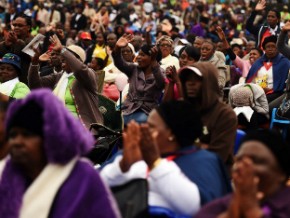Making saints in Africa

Since earliest times, churches have recognized holy individuals as saints. Through the Middle Ages, Christian communities identified and venerated their own local spiritual heroes. In modern times, the Roman Catholic Church formalized and centralized its process of canonization.
The saints recognized in a given era commonly represent a particular theme or cause, or perhaps a region that the church wishes to emphasize or honor. Tracking the saints canonized at any given time conveys a good sense of the church’s changing needs and values, the ideals that it holds out to the faithful. By their saints shall you know them.
In this area as in so much else, the African continent is currently the scene of intense activity. African Catholicism is growing apace, so that within a decade, at least one sixth of the world’s believers will be Africans, and that proportion will rise sharply.




